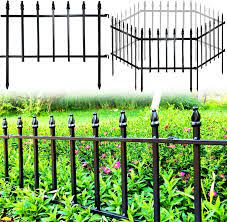Beyond their functional benefits, fences carry considerable symbolic relevance in culture. As actual physical barriers that delineate borders, fences represent ideas of possession, identity, and sociable norms. Let’s check out the much deeper significance behind fences (ploty) and realize why they can be crucial in shaping human being connections and panoramas.
1. Ownership and Restrictions:
Fences work as perceptible marker pens of possession, demarcating where a single property stops and the other commences. This delineation of limitations is not just about physical room but also about asserting manage and sovereignty over one’s domain name. Fences symbolize feelings of ownership and belonging, supplying people with a real representation of the proper rights and obligations.
2. Cultural Value:
In several ethnicities, fences keep strong social significance and therefore are imbued with meaning that reflects social ideals and norms. By way of example, in certain communities, fences are noticed as signs of exclusivity and elitism, breaking up the haves from your have-nots. In contrast, in additional communal countries, fences might be a lot more permeable, symbolizing openness and inclusivity. Learning the social perspective of fences allows us to value their symbolic relevance in several communities.
3. Social Divisions and Addition:
Fences can also signify social divisions and exclusions inside communities. Higher wall surfaces and limitations can indicate segregation and inequality, producing actual limitations that independent individuals based upon class, competition, or ethnicity. Alternatively, fences with wide open gates and reduced wall surfaces represent inclusivity and interconnection, attractive interaction and cultivating feelings of neighborhood. The design and awareness of fences can thus represent fundamental sociable dynamics and energy buildings.
4. Enviromentally friendly Impact:
The proliferation of fences has ecological ramifications, particularly in rural scenery. Substantial fencing can fragment environments and disrupt animals corridors, influencing biodiversity and ecosystem well being. Nevertheless, eco-friendly fencing choices, such as animals-helpful patterns and permeable obstacles, offer options that harmony individual requires with enviromentally friendly preservation. By decreasing their enviromentally friendly footprint, fences can bring about the preservation of organic landscapes and wild animals habitats.
5. Ancient Legacy:
Through history, fences have enjoyed considerable functions in shaping human being societies and landscapes. From old fortifications to colonial enclosures, fences have been used to assert control over territory and sources. The legacy of fences is shown in literature, craft, and folklore, in which they signify styles of divorce, confinement, and liberation. Learning the traditional perspective of fences allows us to enjoy their enduring significance in contemporary society.
To sum up, fences (ploty) are more than simply bodily boundaries they are signs that symbolize sophisticated societal, cultural, and ecological dynamics. As guardians of borders, fences condition man interactions and panoramas, exhibiting and strengthening social principles and norms. Admiring the symbolic incredible importance of fences enriches our knowledge of the built surroundings and our partnership with the territory.
